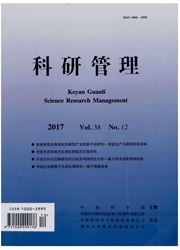

 中文摘要:
中文摘要:
随着以煤炭、石油和天然气为主体的不可再生能源对我国经济发展的约束性日益突出,不可再生能源效率问题成为突破能源约束、确保经济可持续发展的关键所在。以往单纯强调能源投入与经济产出的效率评价模型无法从根本上对不可再生能源自源头开采直至终端利用的全过程效率进行测算,因此,本研究构建了不可再生能源全生命周期效率模型,运用DEA方法对1981—2009年中国不可再生能源全生命周期技术效率、规模效率、经济效率和环境效率进行实证研究。研究结果表明:在国家经济发展和相关政策背景下,中国不可再生能源全生命周期技术效率受技术水平和要素资源配置影响,呈波动变化态势;不可再生能源全生命周期链条具有较大的节能空闽,特别是开采端和终端利用环节;环境效率水平普遍较低,亟待通过技术层面和要素配置层面予以提升;效率测算结果通过计量经济学平稳、均衡检验,验证了模型构建的科学性和实证结果的可控性。最后,从技术层、要素配置、产业结构及政策约束层面,提出不可再生能源全生命周期效率改进与提升的相关对策建议。
 英文摘要:
英文摘要:
With the bonding effect of non - renewable energy on economic development is increasingly prominent, the non - renewable energy efficiency becomes the vital key to break through the energy constraint as well as assure the economic sustainable development. The previous evaluation model that purely emphasizes on energy input and economic output is unable to estimate the whole efficiency from original mining to terminal utilization of non - renewable energy. Therefore, the full life - cycle efficiency model of non - renewable energy is construeted to analyze the technique efficieney, scale efficiency, economic efficiency, and environmental efficiency of China during the period of 1981 -2009 by means of DEA. The results show that under the background of national economic development and related policies, China' s full life - cycle technique efficiency of non - renewable energy is influenced by technique level as well as element allocation, and takes on a fluctuating tendency; there exists enough room for the efficiency improvement of non - renewable energy, especially in the segment of mining and terminal. The level of environmental efficiency is generally low, which needs to urgently improve in the aspects of technical and element allocation approach. The sci- entifieness of evaluation model and controllability of empirical results could be proved by the stationary and equilibrium tests of actual efficiency value. Finally, some suggestions are proposed to improve full life - cycle efficiency of non - renewable energy from the angle of technical progress, element allocation, industrial structure, and policy restraint.
 同期刊论文项目
同期刊论文项目
 同项目期刊论文
同项目期刊论文
 期刊信息
期刊信息
